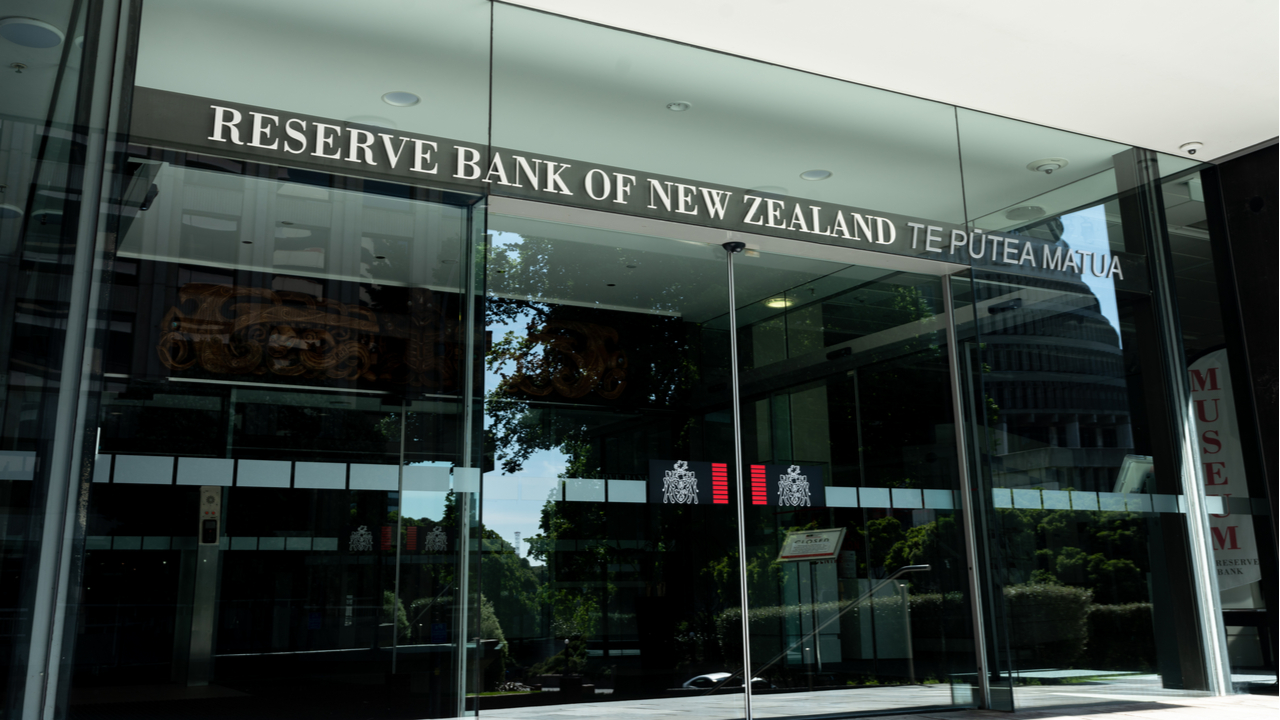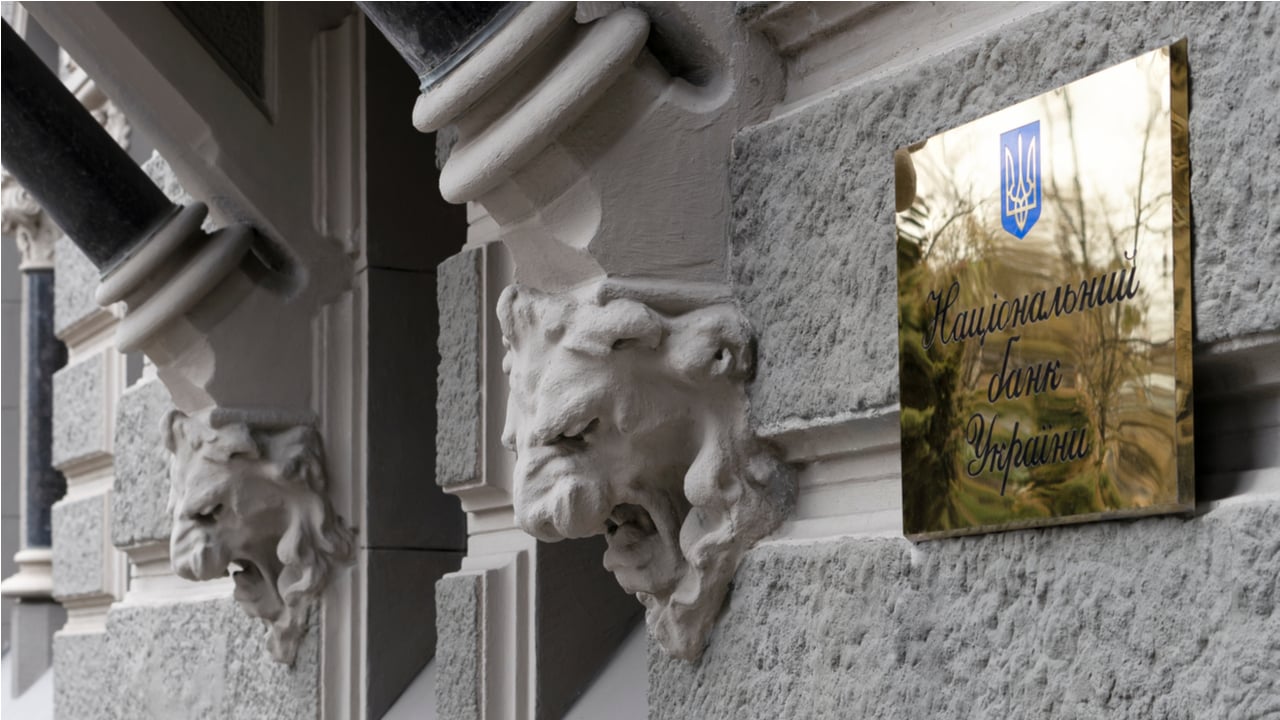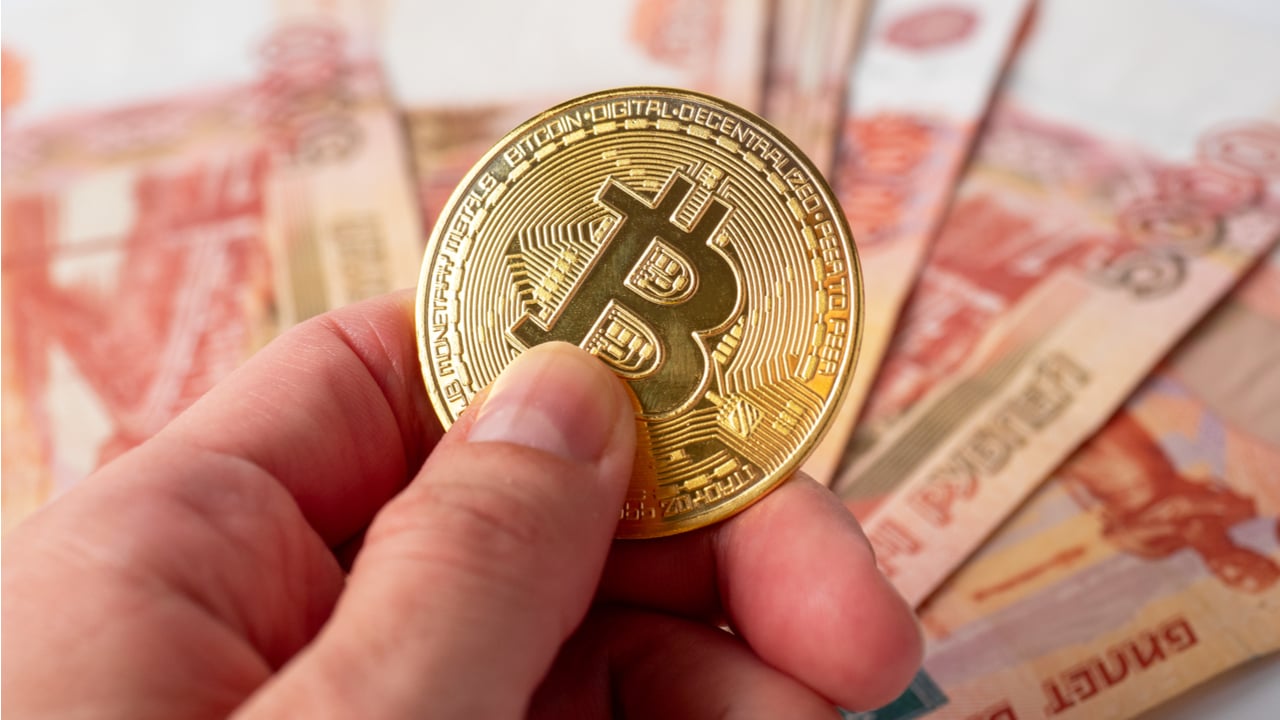 The central bank of Georgia is advancing its digital currency project. The monetary authority is preparing to launch the CBDC as early as next year and plans to use the blockchain-based version of the national fiat, the Georgian lari, to facilitate retail sales. Georgia to Introduce Digital Lari in 2022 The National Bank of Georgia […]
The central bank of Georgia is advancing its digital currency project. The monetary authority is preparing to launch the CBDC as early as next year and plans to use the blockchain-based version of the national fiat, the Georgian lari, to facilitate retail sales. Georgia to Introduce Digital Lari in 2022 The National Bank of Georgia […]
The partnership will enable MoneyGram customers to fund and withdraw from their accounts using the USDC stablecoin at physical branches.
Financial services company, MoneyGram International, has partnered with the Stellar Development Foundation to enable consumers to send money using Circle’s popular stablecoin, USD Coin (USDC) and convert directly to and from fiat.
Per a 6 Oct. announcement, MoneyGram has integrated support allowing crypto wallets connected to the Stellar Network to access its global retail platform. Working alongside Circle, MoneyGram will also enable “near-instant backend settlement”, account funding, and local fiat withdrawals using the USDC stable token.
United Texas Bank will act as the settlement bank to complete the process within the regulatory framework.
"As crypto and digital currencies rise in prominence, we're especially optimistic about the potential of stablecoins as a method to streamline cross-border payments.” said Alex Holmes, MoneyGram Chairman and CEO.
The partnership is expected to launch at the end of 2021 in select jurisdictions, with an expanded international rollout planned in 2022. Denelle Dixon, CEO and executive director of the Stellar Development Foundation, stated:
"A new segment of cash users will be able to convert their cash into and out of USDC, giving them access to fast and affordable digital asset services that may have previously been out of reach.”
MoneyGram's integration with Stellar comes just months after the firm moved to allow customers to withdraw crypto assets for cash via its point-of-sale outlets in the U.S. The service was rolled out in partnership with Bitcoin ATM and crypto exchange operator, Coinme Inc.
Related: Biden admin weighing bank-like regulation for stablecoin issuers
MoneyGram is no stranger to blockchain, having partnered with distributed ledger technology Ripple in June 2019 to collaborate on cross-border payments and foreign exchange settlements with digital assets.
However, the deal quickly went south, due to the uncertainty concerning U.S. Securities and Exchange Commission lawsuit targeting Ripple. MoneyGram suspended support for Ripple's platform during the first quarter of 2021.
Stellar was launched by Ripple co-founder Jed McCaleb following his tumultuous departure from the project in 2014.
Circle published, on 4 Oct., filings revealing it is cooperating with a subpoena from the SEC that it received in July.
 The central bank of New Zealand has lined up among monetary authorities exploring the question of issuing their own digital currencies. The financial regulator is now seeking feedback from the public about the need for a digital form of the national fiat while also promising to preserve cash. New Zealand Central Bank Considers Risks and […]
The central bank of New Zealand has lined up among monetary authorities exploring the question of issuing their own digital currencies. The financial regulator is now seeking feedback from the public about the need for a digital form of the national fiat while also promising to preserve cash. New Zealand Central Bank Considers Risks and […]
Are stablecoins really stable? An in-depth case study based on the third-biggest stablecoin in the world answers the industry’s most pressing concerns.
Stablecoins have emerged as significant players in the crypto market this year, driven by user demand for flexible liquidity in fiat currency times. These currencies are defined as a type of digital currency that can be pegged to underlying real-world assets or backed by them. These assets can be anything from fiat money, commodities like gold or silver, or even another cryptocurrency. As their name suggests, stablecoins are designed to have a value that stays (rather) stable like cash, a contrast to the volatility common in cryptocurrency trading today.
To further illustrate this scenario, a typical fiat-backed stablecoin might involve the token issuer holding 100,000 tokens, each worth $1 USD. Token holders can trade these coins, similar to any other cryptocurrency. The major difference is that the holder can also redeem the coins for an equivalent amount of USD at any time. Since USD is fairly stable, users don’t have to worry that their money will lose its value overnight. As a result, according to CoinMarketCap, there is currently 120 billion dollars worth of stablecoins in circulation.
Although stablecoins have risen as an opportunity to reduce volatility, various segments of the crypto industry have brought up questions about their centralized nature. Since there is no way for the issuer to prove the number of backing funds, a 1:1 peg of major stablecoins to their backing assets, like the U.S. dollar and other fiat currencies, may not mean much, especially without proper regulation. That said, their potential is still evident in many everyday use cases.
To help prove their use, Binance launched BUSD with Paxos in 2019. A major driving force behind this release was ensuring that every unit of the stablecoin was verifiably backed with U.S. dollars and compliant with regulatory and public standards.
To give users peace of mind and provide more credibility to questions about reserves, BUSD’s assets in USD are being held in FDIC-insured banks. In a reserve report from Paxos, 96% of BUSD’s total market capitalization is backed by cash and other cash equivalent reserves, and US Treasury Bills back 4%.

To further guarantee these numbers, BUSD continues to be one of the few stablecoins that provide a monthly audited report of their reserves. Therefore, any BUSD holder can verify at any point in time that the supply of BUSD tokens is consistent with the USD being held and managed by Paxos..
The combination of audits and additional measures to verify BUSD’s asset holding are increasingly crucial in addressing one of the main concerns brought up by the industry today.
The second primary concern with stablecoins today is the current regulation gap, which many believe offers little investor protection, especially in fraudulent activities. Addressing this, BUSD continues to adhere to the highest compliance standards held by the New York State Department of Financial Services (NYDFS). Having a regulator has allowed BUSD to become “Green listed” by regulatory bodies, making it pre-approved for custody and trading by existing virtual currency licenses.
Paxos, their stablecoin issuer, is also regulated by the same body, which ensures:
This level of regulatory oversight helps maintain consumer confidence in an asset that operates in a largely unregulated industry.
Stablecoins offer several additional benefits to regular cryptocurrencies in the right situation. These often include mitigating the effects of market instability, handling recurring transactions, and building a foundation for decentralized finance (DeFi).
Cryptocurrency prices have been known to fluctuate drastically based on popular opinion or private business decisions. Traders may then decide to trade their falling cryptocurrency for an asset or fiat-backed stablecoin to protect the value of their digital currency holdings. As a safe haven, investors can reduce risks by leaving their holdings in a more stable investment vehicle.
Like other fiat currencies, stablecoins can be used for daily transactions such as purchasing a coffee or transferring money to a family member overseas. Fees may be lower than conducting a transaction through the banking system, occur more quickly and ensure the receiver gets a fair value for the trade.
Finally, stablecoins are essential in the continued growth in the world of decentralization by providing the foundation. BUSD is being used on the Binance Smart Chain (BSC) and Ethereum (ETH) for several different functions, one of the key ones being lending. In the loan setting, users can over-collateralize an existing digital asset with stablecoins to ensure a consistent market price, further preventing any fluctuations caused by the underlying collateral.

Loans are just one example of how stablecoins can provide the stability necessary for the blockchain to continue growing as infrastructure and for cryptocurrencies to take on the role of traditional money as a medium of exchange.
With increasing use cases for stablecoins, many believe that the financial industry will be the area that suffers if businesses fail to address these concerns.
For these reasons, BUSD continues to operate with an emphasis on compliance. Doing so can safeguard the trust users and regulators have in stablecoins and open more opportunities for both the public and private sectors. As more stakeholders show acceptance for trusted stablecoins, many believe growth opportunities will follow closely behind.
In a recent virtual press conference, Binance CEO Changpeng “CZ” Zhao shares, “Our view is that it’s great for regulators to be coming in… to get to 10%, 20%, 80%, 99% [crypto] adoption.”
Disclaimer. Cointelegraph does not endorse any content or product on this page. While we aim at providing you all important information that we could obtain, readers should do their own research before taking any actions related to the company and carry full responsibility for their decisions, nor this article can be considered as an investment advice.
 The National Bank of Ukraine recognizes the benefits of endorsing crypto innovations but also fears cryptocurrencies could gain ground on the national fiat. Announcing its monetary policy guidelines for the near future, the regulator noted it’s going to defend the status of the hryvnia as the only legal tender in the country. Bank of Ukraine […]
The National Bank of Ukraine recognizes the benefits of endorsing crypto innovations but also fears cryptocurrencies could gain ground on the national fiat. Announcing its monetary policy guidelines for the near future, the regulator noted it’s going to defend the status of the hryvnia as the only legal tender in the country. Bank of Ukraine […]
Data from a recent report suggest that enforcement actions from U.S. regulators against those in the crypto space cost those firms less than 1% of that in traditional finance for the last 20 years.
While regulators have often targeted projects in and out of the crypto space, the fines levied against digital asset exchanges are a fraction of those against traditional financial institutions.
According to data from Good Jobs First’s violation tracker, the platform analyzed 50 of the biggest fines regulators levied against major banks, investment firms, and brokers over the last 20 years. Bank of America accrued roughly $82 billion covering 251 different fines including securities violations, while JPMorgan Chase and Citigroup were also some of the most fined banks in the U.S. since 2000 with penalties totaling $35.9 billion and $25.5 billion, respectively.
While both major banks and crypto exchanges have often been penalized for securities violations, data suggest that enforcement actions from U.S. regulators against those in the crypto space cost those firms less than 1% of that in traditional finance. Cointelegraph previously reported that from 2009 to early 2021, fines for crypto-related violations have totaled $2.5 billion in the United States, while Good Jobs First’s data shows there were $332.9 billion in penalties from banks, investment firms, and brokers in the last 20 years.
One of the largest actions came from the Securities and Exchange Commission, or SEC, against Telegram’s 2018 initial coin offering. The company was ordered to pay $1.2 billion in disgorgement and $18.5 million in civil penalties in 2020 after being charged for violating securities laws. In contrast, Bank of America was the target of the largest fine from the Department of Justice — $16.6 billion — for selling “toxic” mortgages related to the 2008 financial crisis.
In cases which involved the SEC, Commodity Futures Trading Commission, and Financial Crimes Enforcement Network against crypto firms and individuals, unregistered securities offerings and fraud accounted for more than 90% of all fines. “Toxic securities abuses,” as Good Jobs First describes them, accounted for roughly 29% — $97 billion — of the $332.9 billion in total penalties. Investor protection violations came in second with $68 billion.
Related: SEC enforcement actions cost crypto firms
Though crypto firms continue to be the target of enforcement action by U.S. regulators — in August, BitMEX agreed to pay up to $100 million to resolve a case from the CFTC and FinCEN — there are signs lawmakers in the country are becoming increasingly aware of the economic impact of not having clear guidelines for innovative companies. Many U.S. senators and representatives have gotten behind proposals to amend language in an infrastructure going to the Senate this month. The legislation suggests implementing tighter rules on businesses handling cryptocurrencies and expanding reporting requirements for brokers.
 An overwhelming majority of Russian investors view cryptocurrencies as a more attractive investment proposition than traditional fiat currencies or gold, a new survey has established. Even among those who have never traded digital assets, most already think of buying crypto in the near future. Crypto Is the Promising Opportunity for Russian Investors National currencies are […]
An overwhelming majority of Russian investors view cryptocurrencies as a more attractive investment proposition than traditional fiat currencies or gold, a new survey has established. Even among those who have never traded digital assets, most already think of buying crypto in the near future. Crypto Is the Promising Opportunity for Russian Investors National currencies are […] Two Chinese banks are expanding their pilot programs for the digital national fiat. The state-owned financial institutions have revealed they are aiming to allow digital yuan holders to acquire investment funds and insurance products using the new currency. Chinese Banks Partner With Fund Managers and Insurers in Search of Digital Yuan Use Cases China Construction […]
Two Chinese banks are expanding their pilot programs for the digital national fiat. The state-owned financial institutions have revealed they are aiming to allow digital yuan holders to acquire investment funds and insurance products using the new currency. Chinese Banks Partner With Fund Managers and Insurers in Search of Digital Yuan Use Cases China Construction […] The new digital yuan, currently undergoing trials, can help to increase the international usage of China’s national fiat, experts have stated. As the renminbi (RMB, CNY) is becoming one of the world’s most important currencies, the People’s Bank of China is planning to conduct cross-border tests with the yuan’s digitized version, the e-CNY. Digital Yuan […]
The new digital yuan, currently undergoing trials, can help to increase the international usage of China’s national fiat, experts have stated. As the renminbi (RMB, CNY) is becoming one of the world’s most important currencies, the People’s Bank of China is planning to conduct cross-border tests with the yuan’s digitized version, the e-CNY. Digital Yuan […] While inflation has kicked up in the U.S., following the massive stimulus issued by the Federal Reserve, investor and financial writer Lyn Alden Schwartzer published a report that shows “U.S. households now have record high exposure to stocks.” The news comes at a time when many analysts and economists believe equities markets are in a […]
While inflation has kicked up in the U.S., following the massive stimulus issued by the Federal Reserve, investor and financial writer Lyn Alden Schwartzer published a report that shows “U.S. households now have record high exposure to stocks.” The news comes at a time when many analysts and economists believe equities markets are in a […]